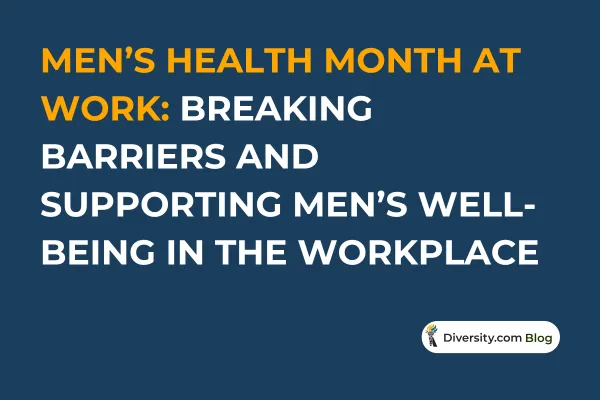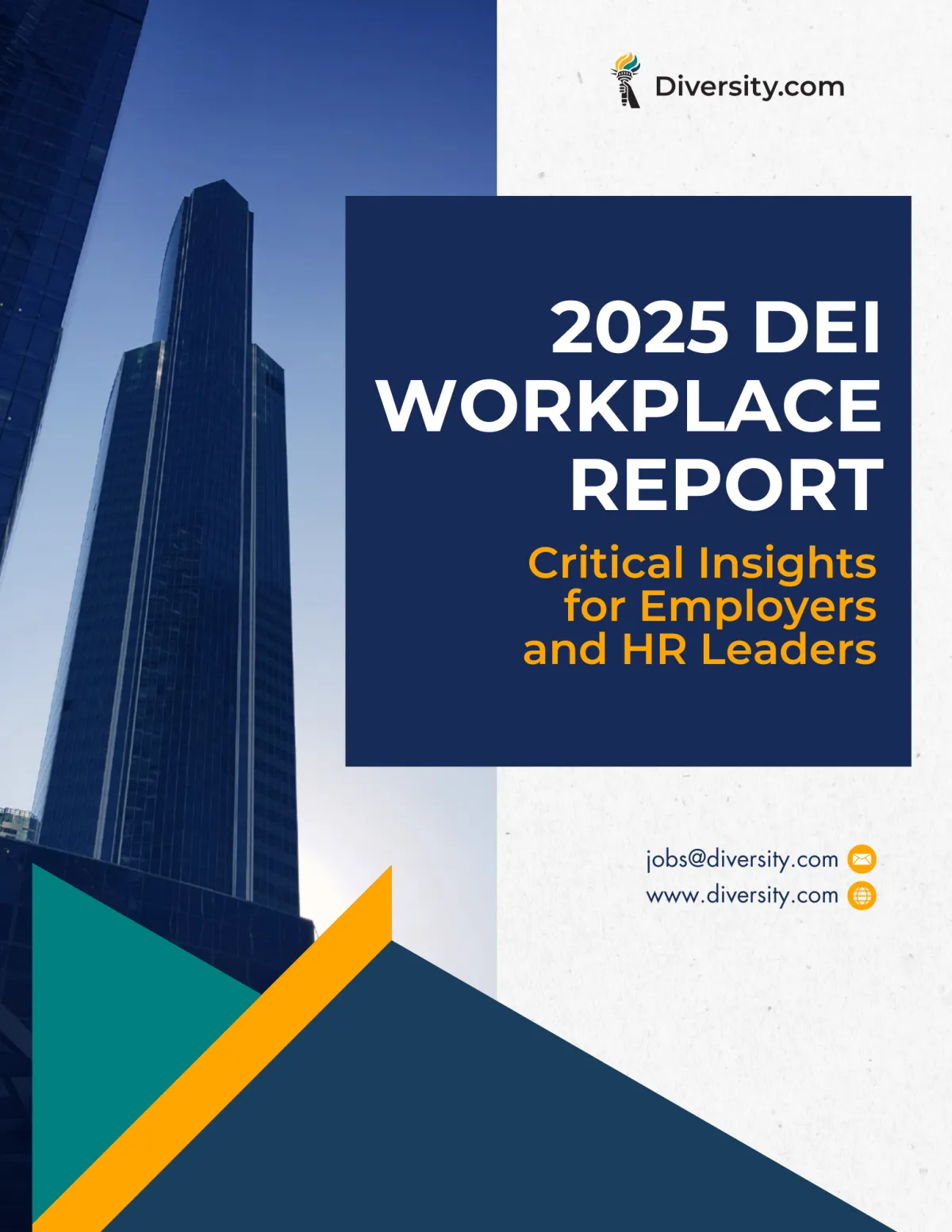
Men’s Health Month at Work: Breaking Barriers and Supporting Men’s Well-Being in the Workplace
Why Men’s Health Month Deserves Attention Now More Than Ever
If you look around any workplace, you’ll see men at every level—leading teams, supporting families, showing up even when it’s hard.
What you can’t always see is the pressure many of them carry to be stoic, strong, and “fine” no matter what.
For decades, men’s health—especially mental health—was a taboo topic at work, wrapped in stigma and silence.
But here’s the truth: men are struggling, often quietly. And when workplaces ignore the reality of men’s health, everyone pays the price.
June is Men’s Health Month. It’s time to talk about what really gets in the way of well-being at work for men—especially men who live at the intersection of race, sexuality, and disability.
The Hidden Cost of Silence: What the Data Shows
Mental Health Struggles
Men are less likely to seek help for depression, anxiety, or stress at work—yet they are nearly four times more likely to die by suicide than women (Centers for Disease Control and Prevention, 2023).
Stigma is even higher for men of color, LGBTQ+ men, and men with disabilities, who face additional barriers to care and inclusion (American Psychological Association, 2022).
Physical Health Gaps
Men are less likely to use preventive healthcare services and more likely to develop chronic conditions like heart disease, diabetes, and hypertension at a younger age (Office of Minority Health, 2023).
The Workplace Impact
Absenteeism, presenteeism, and lost productivity related to men’s health cost U.S. businesses billions each year.
Yet most workplaces still don’t have targeted resources or safe spaces for men to ask for help (Movember, 2023; CDC, 2023).
Why Inclusion Matters Especially for Marginalized Men
It’s not just about gender—it’s about intersectionality.
Men of color face higher rates of stress-related illnesses and less access to culturally competent care (Office of Minority Health, 2023).
LGBTQ+ men are at higher risk for depression, anxiety, and discrimination at work, yet are less likely to access affirming health services (American Psychological Association, 2022).
Men with disabilities report higher rates of workplace exclusion and poorer mental health outcomes, compounded by both ableism and masculinity norms (CDC, 2023).
Ignoring these differences is not only a missed opportunity—it’s a real risk for employee retention, engagement, and morale.
How Employers Can Break the Silence And Barriers
1. Destigmatize Asking for Help
Openly acknowledge that mental health is a men’s health issue. Share real stories, invite male leaders to talk about their own journeys, and normalize conversations about vulnerability and strength.
2. Make Benefits and Resources Visible
Promote Employee Assistance Programs (EAPs), mental health days, and telehealth options. Make sure men know how to access support confidentially and without judgment.
Ensure health plans cover mental and physical health for all employees, including men of color, LGBTQ+ men, and men with disabilities.
3. Address Intersectionality in Wellness Programming
Partner with Employee Resource Groups (ERGs) focused on race, LGBTQ+ issues, or disability to design programming that acknowledges unique barriers and provides tailored resources (APA, 2022).
4. Train Managers in Inclusive Leadership
Equip leaders to spot signs of distress and respond with empathy, not skepticism. Simple questions—“How are you, really?”—can open doors for support.
5. Reimagine Leave and Flexibility
Encourage men to take time off for preventive care, mental health appointments, and caregiving. Model this behavior from the top down.
If You’re an Employer: The Challenge
Ask yourself—when was the last time you made it clear that men could ask for help, take a break, or talk openly about what they’re carrying?
How are you reaching men who feel most isolated at work?
Inclusion doesn’t happen by accident; it’s built by intentional choices, visible policies, and a culture that prizes well-being over outdated ideals of toughness.
If You’re an Employee: You’re Not Alone
You don’t have to keep it all inside. The bravest thing you can do—sometimes—is to reach out, even if it’s just to say, “I’m not okay.”
Your well-being matters, and there’s nothing weak about taking care of yourself.
Conclusion
This Men’s Health Month, let’s trade stoicism for honesty.
Let’s see strength in vulnerability.
And let’s create workplaces where every man—regardless of background—can show up, be seen, and get the support he needs to thrive.
How Diversity.com Supports Inclusive Workplaces and Diverse Talent
At Diversity.com, we know workplace diversity and equity are essential for lasting success.
Whether you are building inclusive hiring practices, seeking employers who value diversity, or navigating changes in workplace legislation, our DEI job board is your trusted partner for opportunity and progress.
As a leading job board for diversity and inclusion, we connect employers committed to equitable workplaces with job seekers looking for inclusive employers and safe, supportive work environments.
For Employers & HR Leaders:
✔ Post Inclusive Job Listings — Reach a broad and diverse talent pool, attract candidates who value workplace equity, and demonstrate your commitment to building a truly inclusive company culture.
✔ Access Up-to-Date DEI Resources — Stay current with the latest guidance on diversity hiring, workplace inclusion policies, and strategies to create equitable workplaces.
✔ Build a Resilient Community — Join a community of HR leaders focused on advancing diversity, equity, and inclusion, and share effective strategies for workplace transformation.
For Job Seekers:
✔ Find Inclusive and Equitable Employers — Discover organizations that lead with DEI, support workplace diversity, and are recognized for inclusive hiring.
✔ Strengthen Your Profile — Build your job seeker profile and connect with employers who value your skills, experiences, and authentic self.
✔ Empower Your Job Search — Access up-to-date articles, guides, and resources to help you find safe, inclusive jobs and advance your career in diverse workplaces.
Every job search and every new hire is a step toward more equitable, inclusive workplaces.
Ready to find your next opportunity or post your inclusive job opening?
If you have any questions or need assistance, feel free to Contact Us Here. Our dedicated support team is ready to help!
Related Articles
Debunking the Myth: DEI Doesn’t Mean Lowering Hiring Standards
Immigrant Heritage Month 2025: Stories, Strength & Innovation at Work
Caribbean American Heritage Month 2025: Culture & Identity at Work
Beyond Pride: Four Overlooked June Observances Every Workplace Should Honor
Disability Pride Month 2025: A Guide to Workplace Inclusion and Culture
Supporting Employee Mental Health During PTSD Awareness Month: Building a Trauma-Informed Workplace
Summer Flexible Work 2025: Why Inclusive Policies Matter for Remote and Hybrid Teams
Juneteenth 2025: How Employers Can Honor Juneteenth at Work and Support Black Employees Year-Round
Real Stories, Real Impact: Older Workers Speak Out on Ageism in 2025
Sources & References
American Psychological Association. (2022). Intersectionality and men's health. https://www.apa.org/topics/men/intersectionality
Centers for Disease Control and Prevention. (2023). Suicide rising across the US. https://www.cdc.gov/suicide/facts/
Centers for Disease Control and Prevention. (2023). Disability and health data system. https://www.cdc.gov/ncbddd/disabilityandhealth/dhds.html
Movember. (2023). Men’s health in the workplace: The importance of action. https://us.movember.com/about/mental-health
Office of Minority Health. (2023). Men’s health disparities. https://minorityhealth.hhs.gov/omh/browse.aspx?lvl=4&lvlid=5

